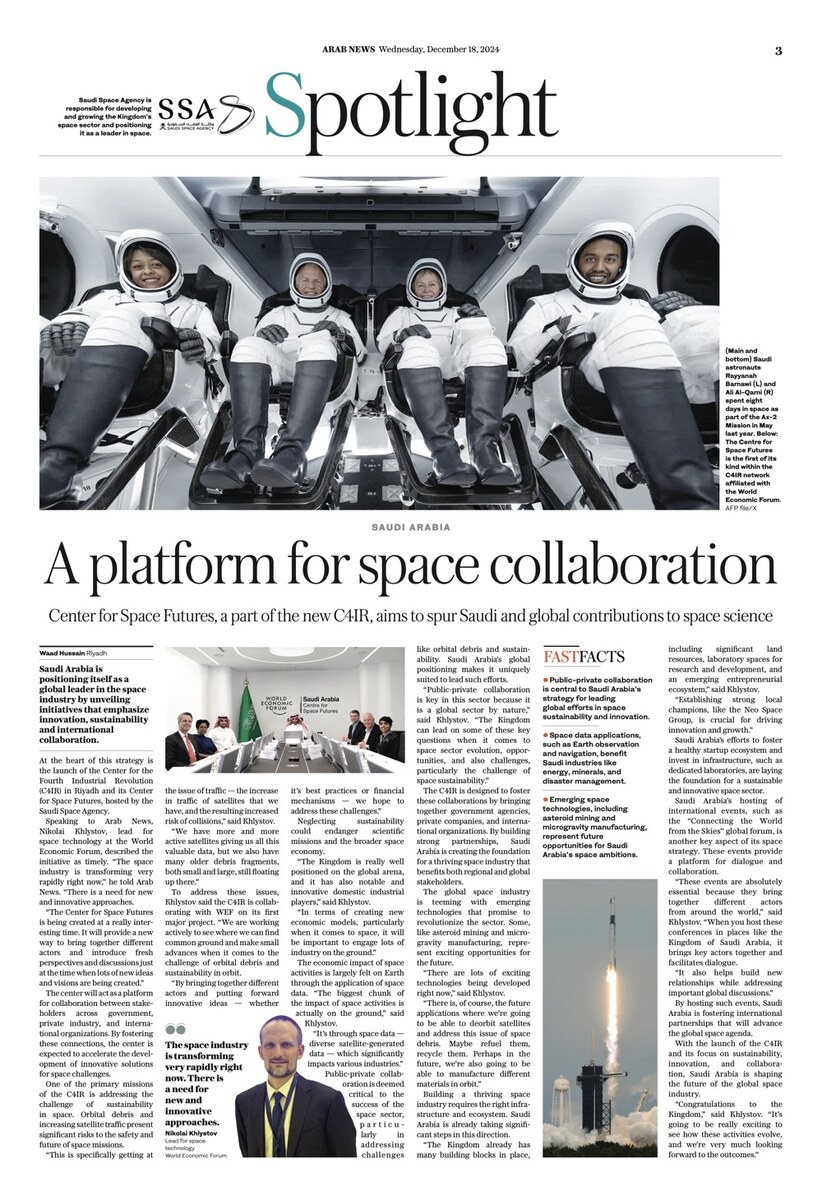Reconciling the fossil fuel industry with climate goals

https://arab.news/n9s9x
Responding to the threat of climate change and continuing to produce fossil fuels seem like opposing and irreconcilable poles.
Those who advocate for sustainability are often labeled ideologues, while those who defend the production of fossil fuels are seen as complicit in environmental degradation. However, neither extreme will lead us to success. As we transition to net zero, the world will need to run two energy systems in parallel.
Decarbonization will undoubtedly take time, similar to the time it took to build our dependence on fossil fuels. The key is to ensure a balanced approach that prioritizes sustainability, affordability, and security, all within the context of economic responsibility and fairness for developing nations.
While the adoption of renewable energy sources is rapidly gaining momentum, oil and natural gas still account for 54.8 percent of global energy consumption, according to the 2024 Statistical Review of World Energy.
The oil and gas industry plays a pivotal role, both in providing the energy that drives today’s economy and in enabling energy transition for the future.
I would even go further and say that the technical expertise, required capital, extensive value chain, experience in capital optimization, familiarity with complex operations and markets, and mastery of the technology necessary to achieve the transition to a low-carbon economy can all be found in oil companies.
Keeping oil companies profitable and leveraging their strengths will be crucial to accelerating the energy transition.
While some oil companies aiming for net zero are making strides in certain areas, they are falling short when it comes to developing low-emission fossil fuels, which refers to the extraction, processing and use of oil and gas in ways that minimize environmental impact.
This contrasts with recent advancements in other heavy industries, where innovations like green cement, iron, and steel production are demonstrating the feasibility of reducing emissions, even at a premium. The oil and gas industry needs to catch up.
“There is some value in this ‘green oil’ label. In general it is welcome to have fossil fuels with low or zero production emissions as they represent 12 percent of the total equivalent CO2 emissions,” Andy Brown, Shell’s former upstream director and executive committee member, who also served as CEO of Galp, told me.
Since 2019, companies like BP, Lundin Energy, Occidental Petroleum, Petronas, Eni, Total, and Shell have offered “carbon neutral” oil and liquefied natural gas, some of them with a price premium and reputational gains.
Keeping oil companies profitable and leveraging their strengths will be crucial to accelerating the energy transition.
Rodrigo Tavares
But transparency is key when branding these products as “green oil.” For the term to be accurate, clear regulations defining what constitutes carbon-neutral crude oil are needed. This would include a universal methodology for calculating emissions throughout the industry.
Additionally, certification for carbon neutrality should be consistent, and oil majors would need to address emissions across their products’ entire life cycle.
Most importantly, achieving it could not rely solely on the purchase and retirement of carbon credits to compensate for the calculated lifecycle CO2e emissions of the product. “Offsets have increasingly been discredited as a way to claim abatement,” said Brown. Priority should be given to switching to lower operational greenhouse gas emissions.
Tellingly, just a couple of months ago, staff at the UN-backed Science Based Targets initiative, which certifies whether a company is on track to help limit global warming to under 1.5 C, expressed concern after plans were announced to allow companies to meet their climate targets with carbon offsets.
As we are still far from reaching this scenario, existing carbon crediting organizations like Verra lack the necessary standards for oil companies to generate carbon credits based on emission reductions.
But while “green oil” is difficult to attain, that should not preclude oil companies from pursuing product carbon reductions, aiming at positive impact and economic upsides.
But how can firms maximize returns on investment and minimize emissions per barrel?
Scaling up electrification, especially through renewable electricity, investing in energy efficiency, reducing fugitive methane emissions, venting and routine flaring, and improving geological surveying and digital technologies to decrease the number of dry holes are all viable options.
Carbon capture, utilization, and storage is another avenue. Aramco is currently developing one of the largest CCUS hubs in the world at Jubail Industrial City.
Through the 2023 Oil and Gas Decarbonization Charter, the 2015 “Zero Routine Flaring by 2030” Initiative, and the 2014 Oil and Gas Climate Initiative, oil majors pledge to reduce their greenhouse gas emissions and adopt targets for reducing carbon dioxide and methane emissions. And all leading oil companies have established net zero targets. These are important steps.
The future may see carbon intensity become as important a factor in valuing crude oil as American Petroleum Institute gravity and sulfur content are today, directly impacting its price.
International energy and sustainability organizations should establish clear methodologies, criteria, and standards for oil and gas to be classified as “low carbon” — a more achievable target than “green” or “carbon neutral.”
Only then can a price premium be realistically introduced into market dynamics.
Potential buyers include environmentally conscious refiners, who can leverage low-carbon oil to market cleaner fuels and sustainable products. Airlines and shipping companies, facing increasing pressure to reduce emissions, are also potential customers, as many have adopted ambitious carbon neutrality pledges.
One should note that governments worldwide are implementing mandatory carbon pricing schemes where polluters pay for their emissions, making low-carbon oil even more attractive.
While low carbon oil shows promise, it is just one step. We must prioritize replacing fossil fuels altogether with renewable sources.
• Rodrigo Tavares is an invited full professor of sustainable finance at Nova School of Business and Economics, founder and CEO of the Granito Group, and former head of the Office of Foreign Affairs of the Sao Paulo state government.



































